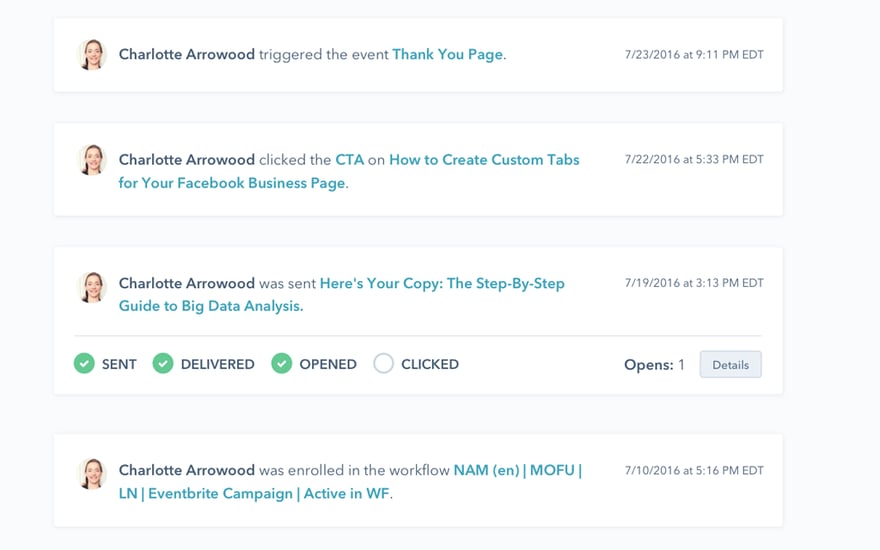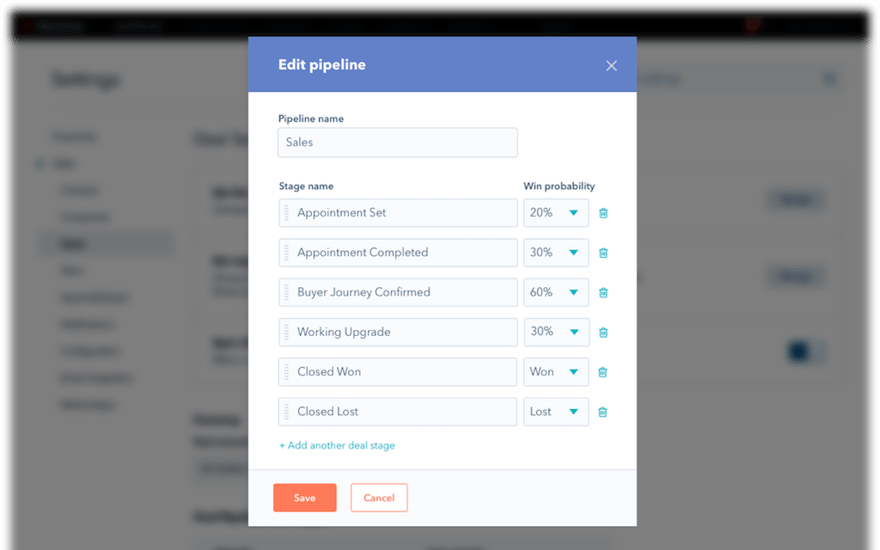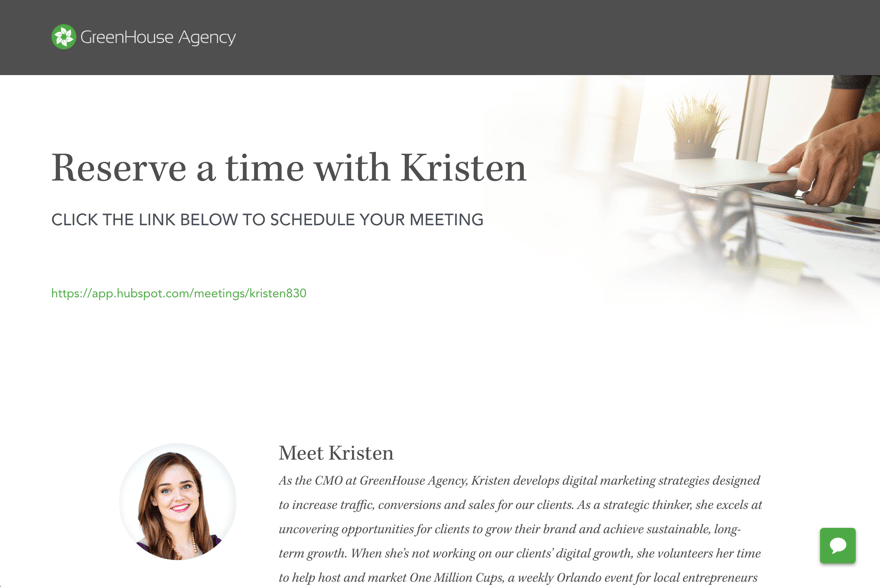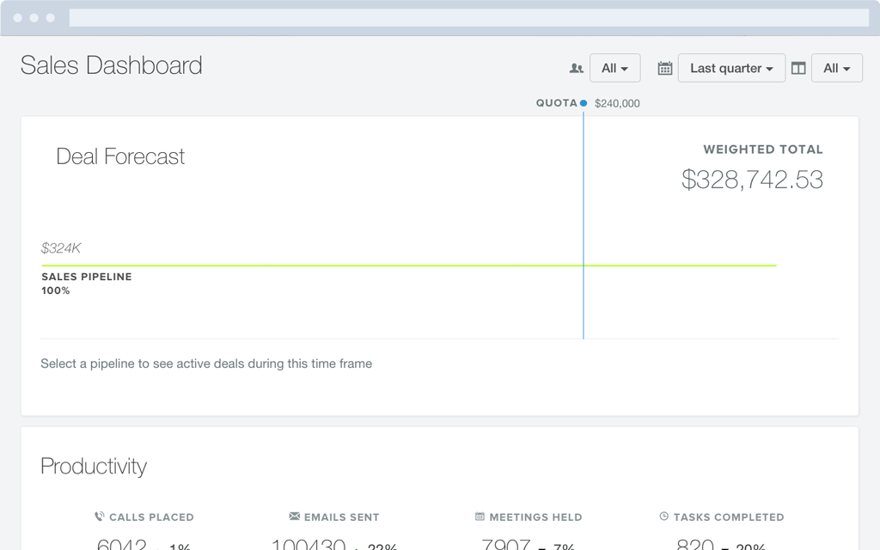Your job isn’t over once a lead decides to try your product or service – in fact, it may be just the beginning. CRMs come in many shapes and sizes, and companies must find the CRM that best fits their sales process, while also being intuitive, moldable, and insightful if they expect their sales teams to commit to the tool and get the most use out of it.
While no two company’s needs are alike, there are specific CRM features that make comprehensive CRMs stand out from the alternatives. Without these features, your team may lose sight of the value the tool provides – and a CRM is no good without buy-in from your sales team.
After seeing our clients try different CRM solutions, only to give up on them due to their complexity and inflexibility, these are the time-saving features we recommend organizations look for when considering and buying a CRM.
Ties into marketing automation software
When marketing and sales are aligned, everyone on your team is armed with information that will help them do their jobs easier.
The CRM you choose should create a seamless handoff from marketing to sales so you know what a prospect is interested in, what information they’ve read, and what blanks your sales team will need to help them fill in.

The HubSpot CRM tracks lead interactions from the very beginning of the buyer’s journey, even from before they became a sales lead. This will tell your sales team how they found your product or service, which content they’ve consumed, and how they should personalize their sales approach to the prospect’s level of interest and sales readiness.
Customization
Every business works differently, so customization is a top priority when searching for the perfect CRM. The last thing you want is to be locked into a CRM system that doesn’t work for your sales team and processes.
We like to split up our HubSpot CRM into multiple Pipelines – one for account based marketing, another for onboarding, and another for sales. By setting up multiple Pipelines, we can create different stages and messages for each prospect we interact with.
For example, in our account based marketing campaigns, we can set up email sequences, via HubSpot Sales, to nurture prospects through the sales funnel. The HubSpot CRM allows us to create our email sequences in advance, then individually enroll prospects and personalize each message as they’re ready to join the sequence.

We’ve also seen clients set up Pipelines and email sequences for things like referral campaigns, but the best part about customization is that you can configure your CRM any way you like, based on the goals and objectives your organization has set.
Scalability
Every organization needs room to grow, and a CRM that can grow with them. The HubSpot CRM is free – up to a million contacts – and includes many of the features your sales team needs. But combined with HubSpot Sales Free or HubSpot Sales Pro, it can be even more efficient.
For example, one-on-one interactions are a critical step in every sales process, but arranging them can be a time suck. We used to send at least two to three emails for coordinating meeting times alone. Luckily, calendar links have changed all of that.
Using the HubSpot Sales shareable calendar link, we can set and edit our availability, then let our prospects select the best time and date that works for them. We’ve added links into our email signatures, as CTA’s in our follow-up emails, and even on landing pages in order to make scheduling easier on our team, and easier on our clients and prospects.

When a prospect selects the date and time for their meeting, it’s reserved on our Google Calendar, and is automatically saved in the Contact timeline within the CRM so our entire team knows a meeting has been set.
Automated tracking and notifications
Keeping up-to-date with where you left off with a deal or customer is critical to reducing repetitive communications. This is where automation can be a huge time saver – especially when it comes to event tracking.
In addition to allowing you to take notes, the HubSpot CRM records every customer interaction automatically. Sync with Gmail or Outlook using HubSpot Sales, and capture every call, email, or meeting as it happens. Best of all, the log will be updated in your prospect’s timeline so your entire sales team will be on the same page with where you’ve left off.
If your team wants to get even more up-to-the-minute insights, you can combine with HubSpot Sales to access real-time notifications.
When leads open your emails, you should be notified right away, not just the next time you log into your CRM. With real-time notifications, you’ll know the instant a prospect opens an email or downloads an attachment so you can arrange your follow-ups around your prospects’ schedule. (You can set these to pop up on your desktop, so you never miss an interaction.)
Email templates
While customer relationship management places an emphasis on personalization, time and efficiency do not have to be sacrificed in order to gain it. Some sales communications are necessary regardless of the customer on the other end – things like confirming an appointment, sending over a contract to sign, or letting the customer know you’re their point of contact for any questions.
At some point, interactions start to look the same, and when they do, templates can be a huge time saver. Typing up the same email over and over again is inefficient when you could instead turn your most repetitive emails into templates.

The HubSpot CRM allows you to create your own email templates and select them from a simple drop-down menu, making it faster and easier than ever to send important communications to your customers with as little unnecessary work as possible.
Dashboards
Managing a sales team well requires having the proper insights.
The HubSpot CRM Dashboard allows you to view reporting on the interactions and goals your sales team has reached as a whole, and individually so you can see who’s performing best. From seeing who gets best open rates to who has the most overall activity, the HubSpot CRM gives you the insights you need to monitor and improve performance.

And from the Pipeline Dashboard, you can monitor the status of every Deal your company is working.
If your sales team is falling short, or a member needs support, you can set and assign Tasks within the CRM to get productivity back on track.
Selecting a CRM
As you select the best CRM for your business, use side-by-side CRM feature comparisons to get the clearest picture of how, and to what extent, the criteria you need in a CRM will be met. Comparing CRM solutions on a like-for-like basis is the easiest way to gauge how much value the solution you're considering will provide.
While many businesses place all of their emphasis on generating leads and customers, others recognize the importance of continuing the relationship after a lead has closed. With the right CRM on your side, your company can do all of that and more.
May 12, 2017

